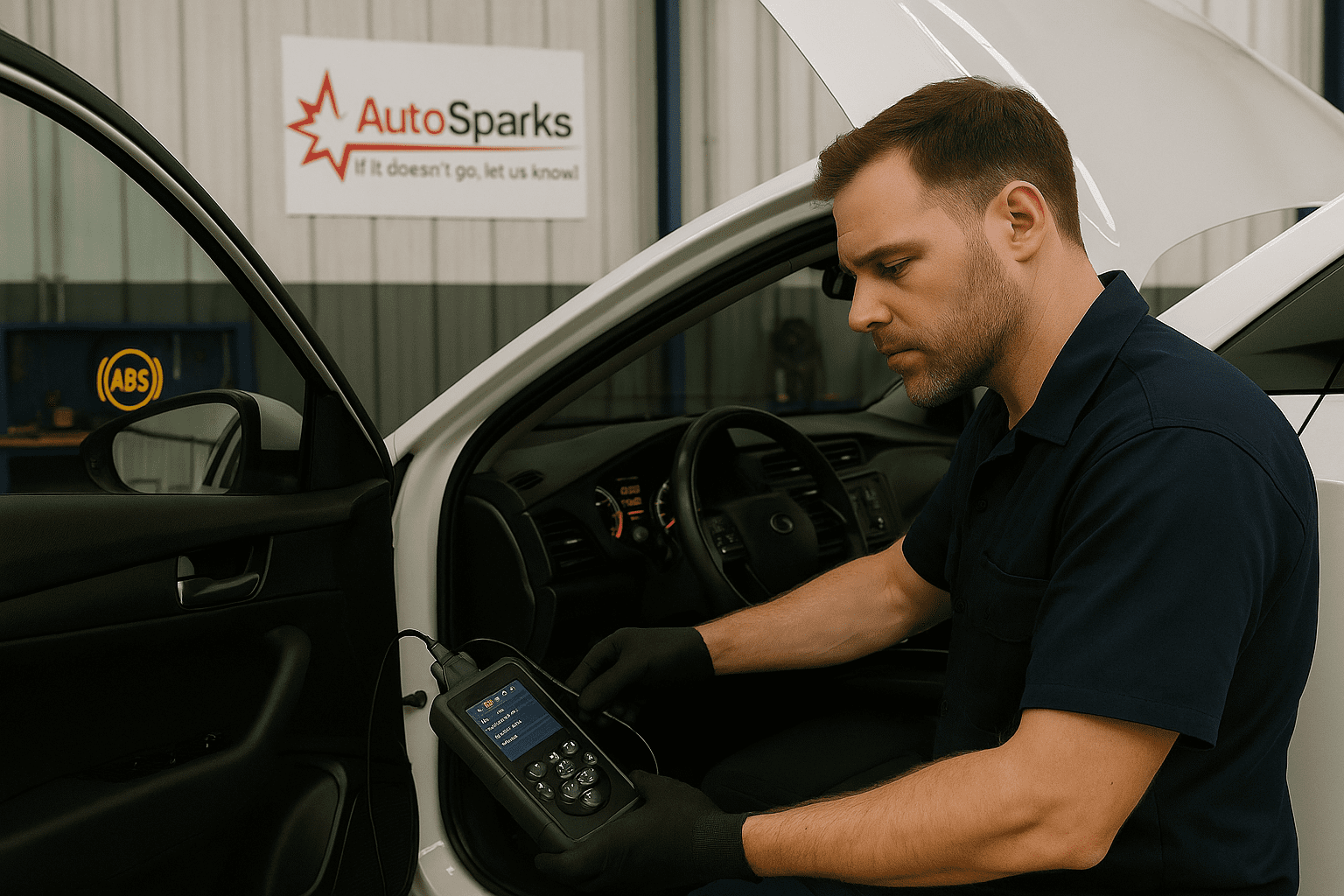Seeing that little ‘ABS’ light pop up on your dashboard can be a bit concerning. You know it relates to your brakes, but what does it actually mean, and is it safe to keep driving? Most importantly, can an auto electrician figure out what’s wrong?
What is ABS?
ABS stands for Anti-lock Braking System. Its job is to prevent your wheels from locking up during heavy braking, allowing you to maintain steering control even in an emergency stop or on slippery surfaces. It works by rapidly pulsing the brakes on individual wheels if it detects they are about to skid.
Why is the ABS Light On?
When the ABS warning light illuminates, it indicates that the system has detected a fault and, in most cases, has disabled the anti-lock braking system (ABS) function. Your regular brakes should still function, but you won’t have the added safety of ABS if you need to brake hard.
Common causes for the ABS light include:
1. Faulty Wheel Speed Sensors: Each wheel has a sensor that tells the ABS computer how fast it’s rotating. These sensors live near the wheels and are exposed to dirt, water, and potential damage. A faulty sensor is one of the most common ABS issues.
2. Damaged Sensor Wiring: The wires connecting the wheel speed sensors to the ABS control module can get damaged, stretched, or corroded, interrupting the signal.
3. ABS Control Module Fault: The ‘brain’ of the ABS system itself can sometimes fail, although this is less common than sensor issues.
4. Low Brake Fluid: While often indicated by a separate brake warning light, low fluid level can sometimes trigger the ABS light in certain vehicles.
5. Issues with the Hydraulic Pump/Valves: The ABS system has its own hydraulic unit with valves and sometimes a pump to control brake pressure. Problems here can also trigger the light.
What Should You Do?
Don’t ignore the light. While your regular brakes should still function, the crucial anti-lock safety feature is likely disabled. Have the system checked by a professional as soon as possible.
Can an Auto Electrician Diagnose It?
Yes, definitely. Diagnosing ABS faults is a core task for an auto electrician. The ABS system is primarily electronic, involving sensors, wiring, and a control module.
Here at AutoSparks in Ashburton, we diagnose ABS problems by:
* Performing a Diagnostic Scan: We use scan tools to read the specific fault codes stored in the ABS control module. This tells us which part of the system reported the error (e.g., ‘Front Right Wheel Speed Sensor Circuit Fault’).
* Testing Components: Based on the fault code, we test the relevant sensors, check wiring continuity and resistance, and inspect connections.
* Checking Live Data: Scan tools allow us to view live data from the wheel speed sensors while the wheels are turning, helping to identify intermittent or inconsistent readings.
Once we’ve pinpointed the cause – whether it’s a faulty sensor, damaged wiring, or another issue – we can carry out the necessary repairs to get your ABS system functioning correctly again and turn off that warning light. If your ABS light is on, bring your vehicle into AutoSparks for a proper diagnosis.

